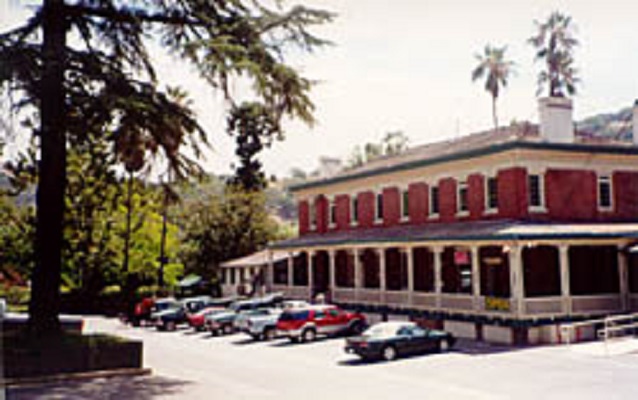Last updated: January 24, 2018
Place
New Almaden

Photograph by Judith Silva, courtesy of the City of Santa Clara
Nestled in a canyon 11 miles south of San Jose between the Pueblo Hills and the spurs of the Santa Cruz Mountains sits the tiny village of New Almaden, the once world famous quicksilver mining community that evolved on Jose Reyes Berreyesa's Rancho San Vicente during the early 1850s. This National Historic Landmark district was California's first mining operation--started in 1845, before the major Gold Rush of 1849. Mexican settler Antonio Sunol discovered ore deposits here in the 1820s, identified as quicksilver by Mexican Army officer Andreas Castillero in 1845. Named for the famous Almaden mercury-producing mines in Spain, New Almaden attracted a world-wide interest during the Gold Rush, since mercury was the primary reduction agent of gold and silver. New Almaden became the most prominent quicksilver mine under the operation of Quicksilver Mining Company in the Western Hemisphere. Today, the New Almaden district encompasses the hacienda, homes of the mining community families along the banks of Alamitos Creek, and the Cinnabar Hills where the actual mining operation took place. Important California property laws stemmed from decades of litigation over mining ownership and interests at this site.
The Hacienda along Alamitos Creek was developed into an attractive showplace; it was the gateway to the mines that lay in the hills a half mile down the tree lined Almaden Road. The hacienda included Casa Grande (21350 Almaden Road), the manager's imposing residence, as well as neat rows of cottages owned by the company and rented to supervisory personnel for a nominal fee. Casa Grande was constructed in 1854, under the direction of the mine's general manager, Henry Halleck, who used the building until 1920 as a personal and official residence for the New Almaden Mining Company. John McLaren, of Golden Gate Park fame, assisted in designing the five acres of formally landscaped grounds around the house, which included a picturesque lagoon. A two-teacher school was built in the 1860s on a flat near Casa Grande. Enrollment came chiefly from the Hacienda along with some children from nearby ranches. One of the oldest buildings in the district is the Carson-Perham Adobe, built between 1848 and 1850 by Mexican miners, and later the home of George Carson, the mine company bookkeeper, postmaster, telegraph operator, and Wells Fargo agent. Constance Perham lived in the adobe house for many years and established a private museum there in 1949, the collections of which were purchased in 1983 by Santa Clara County.
The mine and its villages flourished under the 20-year directorship of James Randol, who took over as general manager in 1870 when S. F. Butterworth retired. Under Randol's orderly discipline the community became a mining town unlike any other in the state, somewhat resembling a beneficent feudal society. The residents' health, wealth, cultural and social lives were taken care of by company-sponsored organizations that the progressive but authoritarian Randol set up. After his retirement in 1892 the mine began to decline. Ore yield dropped off by more than half by the turn of the century. In 1912 the Quicksilver Mining Company declared bankruptcy and closed the mine. The hill camps became deserted with only a few old timers staying on in the company houses along the creek at the Hacienda. In 1974 the County of Santa Clara purchased the hills area for development as a county park. It was also the inspiration for the creation of a County Historic District Zoning Ordinance to assure preservation of the mining town. In 1997, the New Almaden Quicksilver Mining Museum was established in Casa Grande. The museum exhibits the collection of Constance Perham, showing blacksmith workings, the history of mercury mining, and the lifestyles of mining communities at New Almaden.
